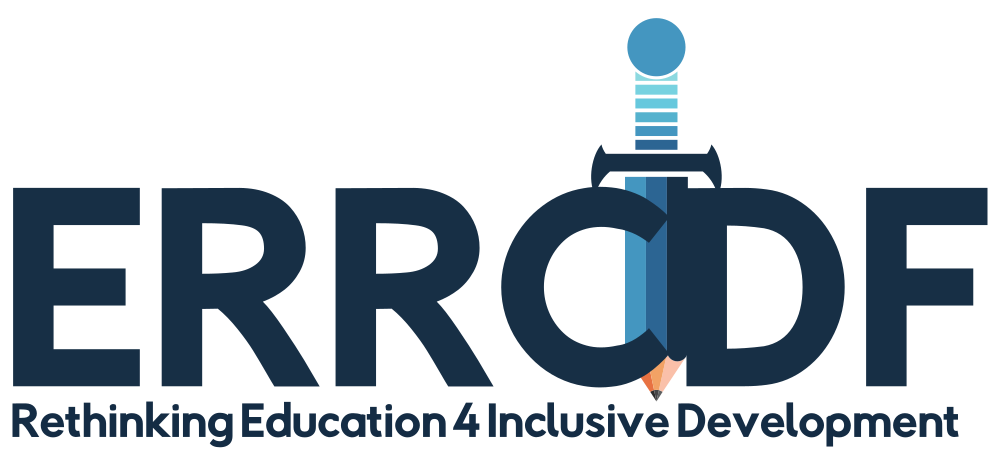The nexus between Geography teachers’ code-switching perceptions and practices: A case study
DOI:
https://doi.org/10.38140/ijer-2024.vol6.11Keywords:
Code-switching practice, multilingualism , teachers’ perceptions, teachers’ practices, Geography teachersAbstract
The study investigated the intersection between teachers' perceptions of code-switching and their actual code-switching practices. The research focused on four Grade 10-12 Geography teachers who were selected purposefully based on their qualifications, teaching experience, fluency in, or familiarity with, the two languages involved, and the grade level they taught. Following the interpretive paradigm and qualitative approach, the study employed semi-structured interviews to gather the participants' perceptions of code-switching as a teaching practice, as well as their implementation of it in the classroom. Additionally, classroom observations were conducted to observe the teachers' actual code-switching practices during Geography lessons. The study then compared the teachers' perceptions and practices to determine the extent of their intersection. Thematic data analysis was used to analyse the data. The results revealed a discrepancy between the teachers' perceptions and practices, particularly in terms of the purposes, types, and frequency of code-switching, among other aspects. The study concludes that classroom code-switching was not a deliberate and conscious activity guided by a well-informed and equally conscious understanding of the practice, but rather a largely habitual behaviour. As a recommendation, the study suggests conducting in-service workshops to enhance teachers' comprehension of code-switching and provide them with effective strategies for its application in the classroom.
References
Ahmed, S. K. (2024). The pillars of trustworthiness in qualitative research. Journal of Medicine Surgery and Public Health ,2, 1–4. https://doi.org:10.1016/j.glmedi.2024.100051
Alegado, J. R., Labaya, A. M., Lirio, P. S., & Rivera, R. S. (2021). A linguistic analysis of Tagalog-English code-switching in OPM Love Songs. Department of English, Foreign Languages and Linguistics College of Arts and Letters, 1.15.
Braun, V., & Clarke, V. (2014). Thematic Analysis. In Teo, T. (ed.) Encyclopedia of Critical Psychology, pp. 1947–1952. Springer. https://doi.org/10.1007/978-1-4614-5583-7_311
Crowe, S., Cresswell, K., & Robertson, A. (2011). The Case Study Approach. BMC Med Res Methodol, 100, 3-5. https://doi.org/10.1186/1471-2288-11-100
Diko, M. (2023). Code-switching as a bilingual and multilingual linguistic strategy in the construction of Amathaf’entandabuzo. Southern African Linguistics and Applied Language Studies, 1–11. https://doi.org/10.2989/16073614.2023.2237081
Han, X., Li W, & Filippi, R (2022). The effects of habitual code-switching in bilingual language production on cognitive control. Bilingualism: Language and Cognition, 25, 869–889. https://doi.org/10.1017/S1366728922000244
Horasan, S. (2014). Code-switching in EFL classrooms and the perceptions of the students and teachers. Journal of Language and Linguistic Studies, 10(1), 31–45. https://dergipark.org.tr/en/pub/jlls/issue/9938/122924
Jehan, Y., Bukhari, W. A. A., & Rovidad, M. (2020). Comparative analysis of local body and non-local body government regimes in provision of public services in terms of health & education: evidence from Pakistan. Pakistan Journal of Educational Research, 3(2), 124-130. https://doi.org/10.52337/PJER.V3I2.43
Kivunja, C., & Kuyini, A.B. (2017). Understanding and applying research paradigms in educational contexts. International Journal of Higher Education, 6(5), 26-41. https://doi.org/10.5430/ijhe.v6n5p26
Koban, D. (2013). Intrasentential and intersentential code-switching in Turkish-English bilinguals in New York City. Procedia Social and Behavioral Sciences Journals, 70, 1174-1179. https://doi.org:10.1016/J.SBSPRO.2013.01.173
Mabule, D. R. (2015). What is this? Is it code switching, code mixing, or language alternating? Journal of Educational and Social Research, 5(1), 339-348. https://doi.org/10.5901/JESR.2015.V5N1P339
Maluleke, M.J. (2019). Using code-switching as an empowerment strategy in teaching Mathematics to learners with limited proficiency in English in South African schools. South African Journal of Education, 39(3), 1-7. http://dx.doi.org/10.15700/saje.v39n3a1528
Mawela, A. S., & Mahlambi, S. B. (2021). Exploring teachers' views on code-switching as a communicative technique to enhance the teaching of mathematics in grade 4. International Journal of Educational Methodology, 7(4), 637-648. https://doi.org/10.12973/ijem.7.4.637
McCombes, S. (2019). How to do a Case Study. https://www.scribbr.com/methodology/case-study/
Myers-Scotton, C. (1993). Social motivations for code-switching: Evidence from Africa: Clarendon Press. https://doi.org/10.1016/0024-3841(96)81482-3
Rahmat, H. H., Othman, N.A., & Unin, N. (2019). Exploring the functions and reasons for intersentential code-switching among Lecturers. European Journal of English Language Teaching, 4(4), 112-113. https://doi.org/:10.5281/zenodo.3228544
Rehman, Z., Bashir, I. & Rehman, A. R. (2020). An Exploration of Teachers’ Code-switching. Competitive Social Sciences Research Journal, 1(2), 54-71.
Sibanda, J. (2017). Language at the grade three and four interface: The theory?policy?practice nexus. South African Journal of Education, 37(2), 1?9. http://dx.doi.org/10.15700/saje.v37n2a1287
Sibanda J. (2021) Appreciating the layered and manifest linguistic complexity in mono-multi-lingual STEM Classrooms: Challenges and prospects. In: Essien A.A., Msimanga A. (eds) Multilingual Education Yearbook 2021. Springer. https://doi.org/10.1007/978-3-030-72009-4_2
Songxaba, S. L., Coetzer, A., & Molepo, J. M. (2017). Perceptions of teachers on creating space for code-switching as a teaching strategy in second language teaching in the Eastern Cape province. University of Cape Town. https://doi.org/10.4102/rw.v8i1.141
Steyn, G. (2017). The transition of grade 4 learners to English as medium of instruction. Pretoria: University of Pretoria. http://hdl.handle.net/2263/65469
Terveen, C. (2013). Frequency and function of code-switching among German-English bilingual preschool children in Cape Town. Stellenbosch University. http://hdl.handle.net/10019.1/85602
Uys, D. & van Dulm, O. (2011). The functions of classroom code-switching in the Siyanda District of the Northern Cape. Southern African Linguistics and Applied Language Studies, 29(1), 67-76. https://doi.org/10.2989/16073614.2011.583159
Van der Westhuizen, E., & Niesler, T. (2018). A first south african corpus of multilingual code-switched soap opera speech. Stellenbosch University.
Zainil, Y., & Arsyad, S. (2021). Teachers’ perception of their code-switching practices in English as a foreign language classes: The results of stimulated recall interview and conversation analysis. SAGE Open, 11(2). https://doi.org/10.1177/21582440211013802
Downloads
Published
How to Cite
Issue
Section
License
Copyright (c) 2024 Ditiro Leruele, Jabulani Sibanda

This work is licensed under a Creative Commons Attribution 4.0 International License.










